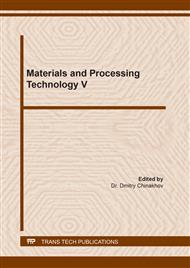p.17
p.27
p.39
p.47
p.57
p.63
p.73
p.83
p.93
Study of Abrasive Grains for Susceptibility to Electrostatic Field Effect
Abstract:
Currently, two main methods of applying abrasive grains to the surface of a flexible backing - mechanical and electrostatic - are used for the manufacture of grinding tools. The mechanical method of abrasive applying involves pouring an abrasive onto a backing, on which an adhesive has been previously applied. In this case, grains are fixed on the surface of a backing in a non-optimal way in a chaotic manner without taking into account their geometric parameters. This subsequently leads to rather low performance of such tools, thereby not allowing the full use of their capabilities. In the electrostatic coating, abrasive grains are oriented along their major axis perpendicular to a backing. A large number of studies show that grain orientation by this method improves the cutting performance of an abrasive paper. At the same time, the mechanism of the effect of an electrostatic field on abrasives of various grain sizes, depending on the interelectrode space, has not been fully studied. Based on this, studies aimed at scientific substantiation of the process of orientation of abrasive grains on the working surface of an elastic tool in an electrostatic field are of great relevance. This work is devoted to the study of the effect of an electrostatic field on abrasive grains. The article presents some results of studies of the susceptibility of brown aluminium oxide 14A of various grain sizes to the electrostatic effect.
Info:
Periodical:
Pages:
57-62
Citation:
Online since:
February 2022
Authors:
Price:
Сopyright:
© 2022 Trans Tech Publications Ltd. All Rights Reserved
Share:
Citation:


